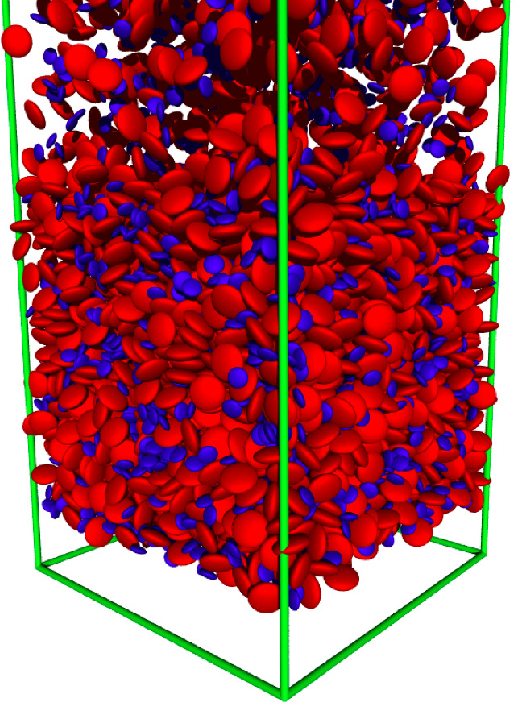Paper: Utilising Evolutionary Algorithms to Design Granular Materials for Industrial Applications
Granular materials, such as sands, soils, grains and powders, are ubiquitous in both natural and artificial systems. They are core to many industrial systems from mining and food production to pharmaceuticals and construction.

Fig. 2. DEM simulation of the creation of a bi-disperse granular packing by allowing a set of grains to settle under gravity.
Granular media display unique properties, including their ability to flow like a liquid at low densities and jam in to a solid state at high densities.
Granular materials are used functionally in a number of industrial systems, where for example their insulating, energy absorption, filtration or vibration damping properties are variously exploited.
A recent emerging industrial application is to utilise the jamming transition of granular matter (transition from a sold to a liquid) to create functional jammed systems such as universal grippers or soft robotic devices with potential broad impact across many industrial sectors.
However, controlling the microscopic properties of such systems to elicit bespoke functional granular systems remains challenging due to the complex relationship between the individual particle morphologies and the related emergent behaviour of the bulk state.
Here, we investigate the use of evolution to explore the functional landscapes of granular systems. We employ a superellipsoid representation of the particle shape which allows us to smoothly transition between a large variety of particle aspect ratios and angularities, and investigate the use of multi-component systems alongside homogenous granular arrangements.
Results show the ability to successfully characterise a sample design space, and represent an important step towards the creation of bespoke jammed systems with a range of practical applications across broad swathes of industry.
Delaney, Gary; Howard, David; De Napoli, Krystal. Utilising Evolutionary Algorithms to Design Granular Materials for Industrial Applications. IEEE International Conference on Machine Learning and Applications (ICMLA). 2019; 1897-1902
Download the full paper here.
For more information, contact us.
[jetpack_subscription_form title=”Subscribe to our News via Email” subscribe_text=”Enter your email address to subscribe and receive notifications of new posts by email.”]
